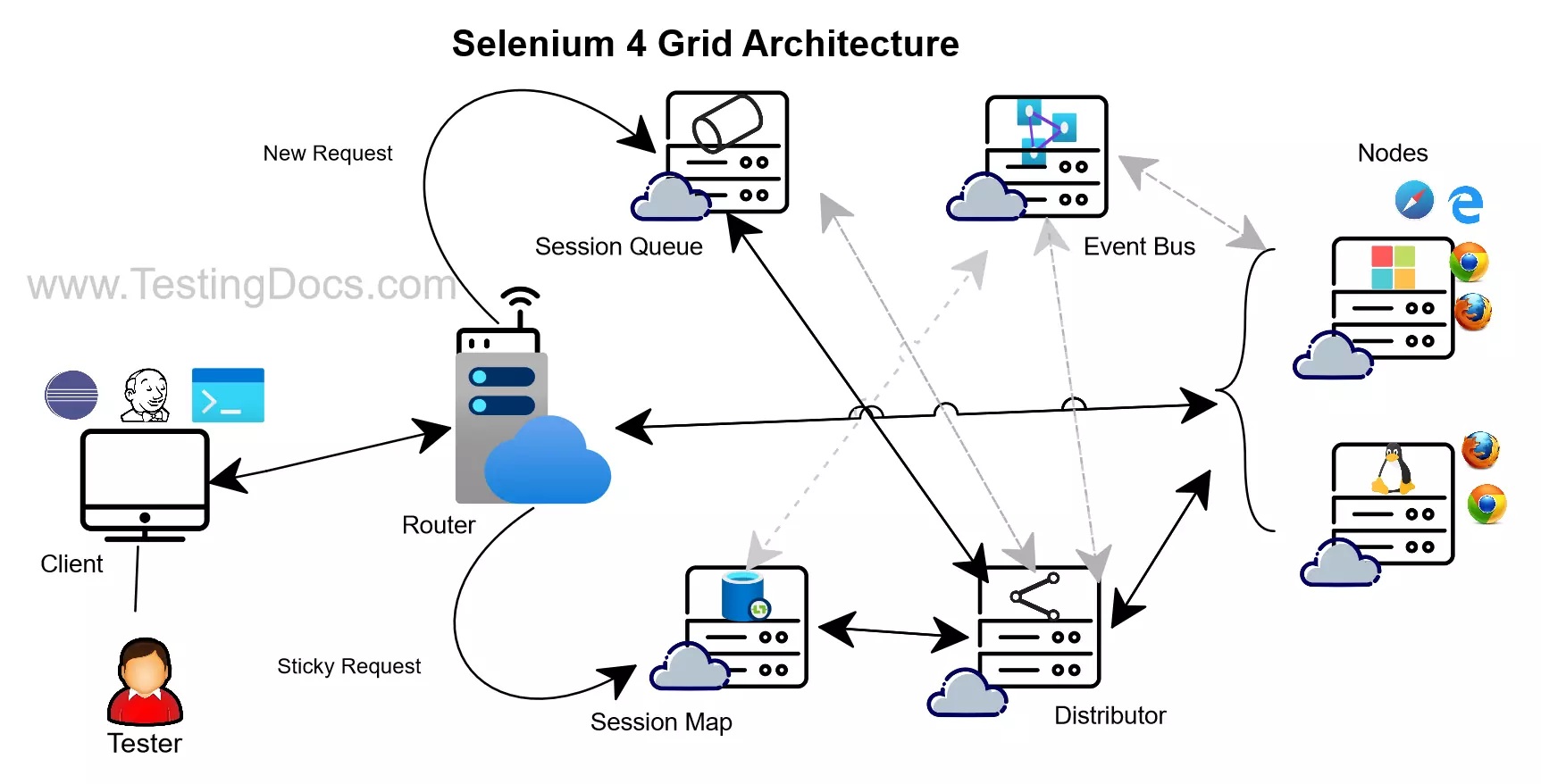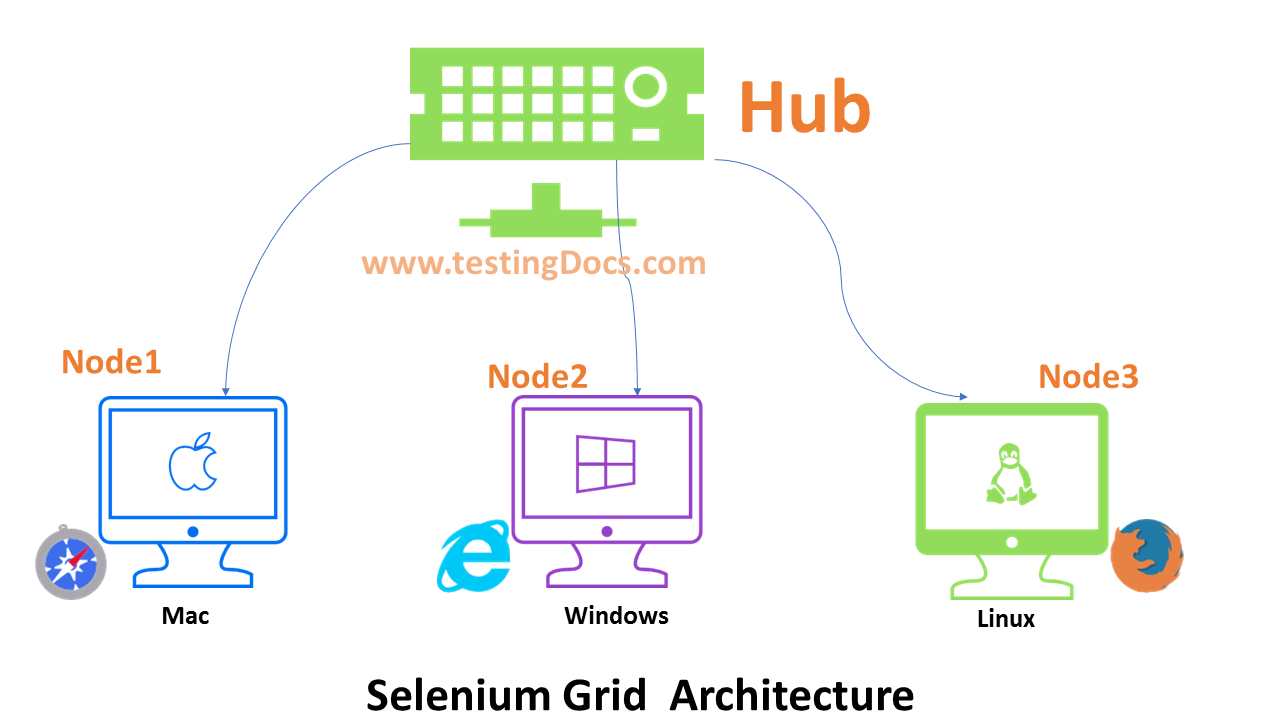Selenium 4 Grid Architecture
Selenium 4 Grid Architecture
In this tutorial, let’s examine the Selenium 4 Grid Architecture. The components work together and interact with each other in distributed mode to scale and distribute Selenium tests on different browsers and machines.
To know more about the Selenium Grid Distributed Mode:
The Grid Architecture is displayed below.

Related
https://www.testingdocs.com/different-selenium-grid-modes-in-selenium-4-0/
—
Selenium Tutorials on this website:
https://www.testingdocs.com/selenium-webdriver-tutorial/
Official Website:








